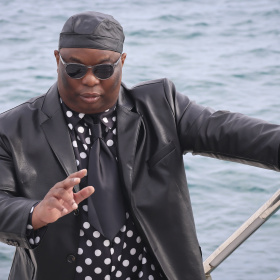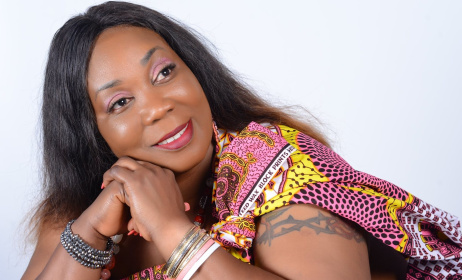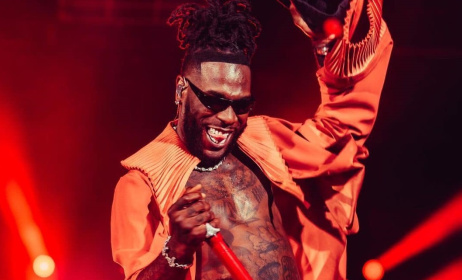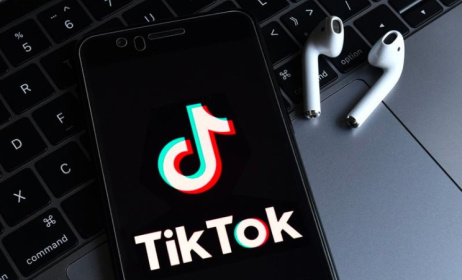Is music on TikTok a different kind of art?
The idea that TikTok is changing the music industry should be old news to African musicians. The platform’s first #Amapiano festival was held in November 2021 after our homegrown genre reached 1.6 billion views over the course of the year. This, of course, after the breakout hit ‘Jerusalema’ from Master KG featuring Nomcebo clocked more than 1 billion views of its own in 2020, prompting global fandom, bitter court battles, and, ultimately, real change within the South African music industry.
 TikTok has, in a sense, turned the function of music on its head, says the author.
TikTok has, in a sense, turned the function of music on its head, says the author.
TikTok’s impact on the music industry has been widely and ably reported by both mainstream and independent outlets around the world. But how should we understand its effect? Is TikTok simply another vector for the music industry, or does it represent something new and unique?
Inside the TikTok algorithm
The nervous system of any social media platform is its operating algorithm. For the purposes of this article, there are three important things to know about the TikTok algorithm.
First, unlike other social media platforms, the TikTok algorithm is front and centre of the user experience. As the researchers Aparajita Bhandari and Sara Bimo explain, “On TikTok, the user experience is obviously, unambiguously, and explicitly driven by what is commonly called the ‘For You’ algorithm.”
The next important thing to know is that although the exact workings of the algorithm are a closely guarded secret, TikTok does not base recommendations on follower, view or subscriber count. A study by the Wall Street Journal, which used bots and machine learning models to try and crack the TikTok algorithm, discovered that the For You algorithm is powered by what the user finds interesting.
As described by Ben Lovejoy, “The WSJ programmed bots to have an age, location, and a set of particular interests. The bot checked each video in its feed for hashtags or AI-identified images relating to its interests. It would then stop scrolling to watch these videos, and rewatch some of them.”
The result? According to the researchers, “TikTok fully learned many of our accounts’ interests in less than two hours. Some it figured out in less than 40 minutes.”
Which brings us to the final important point about the TikTok algorithm: it is extremely good at what it does. So good, in fact, that researchers Bhandari and Bimo argue it engenders an extraordinary amount of trust in its users. According to them, this level of trust leads to a process of identity formation they call the “algorithimisation of the self.”
Their argument is based on the fact that the TikTok algorithm “repeatedly confronts [users] with various aspects of their own personas” – and the remarkable trust this establishes extends far beyond the discovery of new music. For example, the recent trend of users outsourcing deeply personal decisions – from mental health diagnoses to questions about sexual orientation – to TikTok’s For You recommendations.
Don’t be too sceptical: this is definitely a thing, with testimonials usually focusing on the platform’s seeming ability to “[read] your soul like some sort of divine digital oracle, prying open layers of your being never before known to your own conscious mind.” (Jess Joho, 2021)
In the context of an industry that has been completely transformed by digitisation, it is a safe bet to assume that the future of new music discovery will be shaped by its most trusted algorithms. TikTok is leading the way for now, but others are already following.
Listen to this podcast from The Unlearn Project about how TikTok is fundamentally changing music.
Music on TikTok: Peak UGC
Layered onto TikTok’s uniquely powerful algorithm is a set of in-app tools – such as Duet (where users can display an existing video and their own response side by side) and Stitch (where users can integrate existing videos into their own) – which double down on the centrality of the user experience.
Watching YouTube videos is great but your ability to interact with the actual video content is limited to liking, commenting and subscribing to the creator’s channel. In contrast, watching videos on TikTok is not meant to be a passive engagement – you are encouraged to do something with the videos in your feed.
When you add all these features up, the key advantage leading to TikTok’s runaway success is that it is more effective at promoting user generated content (UGC) than any of its competitors.
UGC describes content that is ‘created’ by users of the platform (rather than ‘released’ onto it), and it is a market that is expected to grow at incredible rates – from $3bn to $20bn over the next eight years – while affecting creative industries of all kinds.
Tatiana Cirisano, a music industry analyst, explains the TikTok effect in this light: “It's changed music listening from being a one-way relationship where a song comes out and you listen to it on your own, to something that you participate in. I don't think that any other social media app has done that to this degree. TikTok is peak UGC in that way.”
Evidence of this change in what people want from music on TikTok is easy to come by. From breakout stories (see Lil Nas X), to overnight sensations (see Tai Verdes), artists explicitly writing for the platform (see Drake’S ‘Tootsie Slide’) and unexpected comebacks (see Celine Dion), the audience’s ability to do something new with the music they consume on TikTok – dance, lip-synch, dress up, etc. – is determinative of its success.
This video from Nathan Apodaca (@420doggface208) catapulted Fleetwood Mac’s 1977 hit ‘Dreams’ into the Billboard Hot 100 more than 40 years after its original release.
Arts of action
If old John Dewey was right, and the essential purpose of music is to provide “an experience of listening,” then TikTok is not the first time in history that music has been forced to accommodate a genre that seems at odds with its basic function.
Think of muzak. This is a form of music that is designed to be played in spaces, such as elevators and reception areas, where people come together with no intention of listening to music. Despite this seemingly large obstacle, it’s an industry that has become arguably more interesting since its birth in 1934, with AI now composing elevator ditties that are “indistinguishable from the works of JS Bach.” (Mike Murphy, 2022)
Is this a glimpse into the future of music on TikTok? Maybe, but there could be something more fundamental going on with the rising wave of interest-driven algorithms and UGC.
In his 2020 paper The Arts of Action, the philosopher C. Thi Nguyen seeks to outline a “new schema” for understanding the arts. The paper is well worth reading in full and there are several sophisticated aspects to Nguyen’s thesis, but it cashes out as an argument for the recognition of a new kind, or category, of arts – the ‘arts of action’.
These arts include board games, social dances and rock climbing, among others, and they are defined by Nguyen as “forms which sculpt activity, often for aesthetic ends.” They stand in contrast to the ‘arts of objects’, where “the artist imbues the artifact itself with aesthetic properties.”
Think again about the difference between listening to music and interacting with music on TikTok. In the former, you are invited to appreciate the fixed and unchanging aesthetic properties of the song – i.e. the object. In the latter, to quote Nguyen, “... the artist creates the artefact in order to call forth aesthetic action, where the intended aesthetic properties will emerge in the actions themselves.”
What is particularly resonant about Nguyen’s definition is the open-endedness of the aesthetic action inspired by the artefact – the space created for the user to make their mark. As he says, there is no “[requirement] that the purpose of an artifact align with the designer’s intent.” By Nguyen’s definition, music on TikTok is not just a new platform for music as we know it. It is a whole new form of art – one in which the fundamental relationships between creator and consumer, product and platform, are being radically renegotiated.





























Commentaires
s'identifier or register to post comments